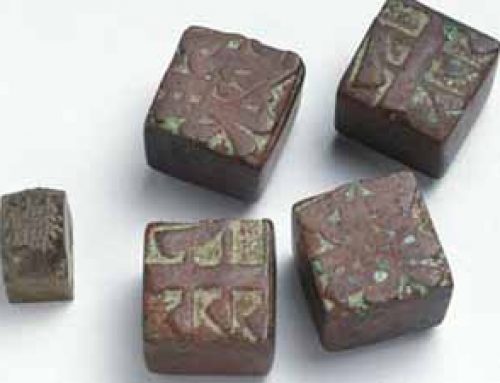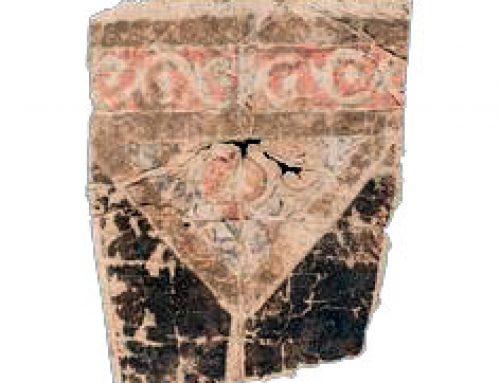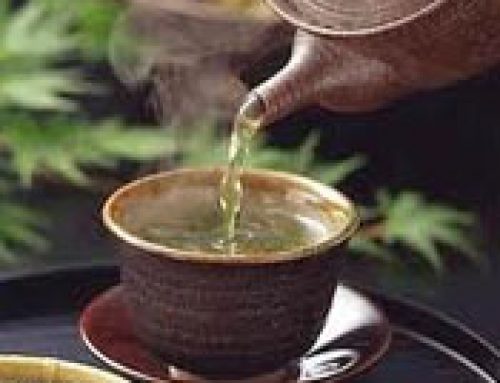
Chinese food
Chinese food: rice
Rice was the first grain that people farmed in China, and rice is such a basic food in China that the Chinese words for “cook” and “eat” both include the word for “rice”. At first people picked wild rice. But people were farming rice along the Yang-tse River by about 6000 BC.
History of rice
Farming in early China
More Ancient China articles
People cooked rice by boiling them in water, the way you do today. They ate rice with fish and shellfish, like other people in prehistory. Or they made rice into wine. People have been drinking rice wine in China since prehistory.
History of fishing
In the north, people ate millet
But rice doesn’t grow in northern China, which is much drier and colder. People in northern China grew millet instead, starting about 8000 BC, and they gathered wild sorghum. By 5000 BC, many people in northern China ate mainly millet. They ate it boiled into a kind of porridge.
What is millet?
History of sorghum

Chinese food – rice noodles
All the tea in China
Another food people associate with China is tea. Tea grows wild in China. By about 3000 BC (or it could be much earlier), people in China had begun to drink tea. Soon everybody drank tea.
History of tea
Wheat reaches China
Wheat was not native to China, so it took much longer to reach China. People in northern China first began to eat wheat about 2500 BC. Central Asian traders brought wheat to China from West Asia (and brought millet the other way). People in China boiled wheat like millet, to make something like Cream of Wheat.
History of wheat
These were the main carbohydrates of China – rice, millet, sorghum, and wheat. In northern China, people mostly ate millet, wheat, and sorghum. Or, if they couldn’t get those things, they lived on chestnuts. In southern China, people mostly ate rice. For fat, they crushed soybeans for soybean oil. Poor people ate almost nothing but these foods – they hardly ever had meat or fruit.
More about chestnuts
Fish and vegetables

Peaches growing on a peach tree
People probably first came to China following the fish north along the Pacific coast, and by about 40,000 BC they invented pottery, probably in order to store fish and make pickled fish or fermented fish sauce. That made their rice taste a lot better!
Pottery in early China
When people could afford it, they also bought or grew vegetables to put on their rice. Cucumbers and bok choy, for instance, are native to China.
For fruits, the Chinese had citrons, peaches, and apricots. Ginger and anise are also from China (Americans use anise to make licorice).
History of peaches
All about citrons
Chicken and other meat
On special occasions, people also put little pieces of meat on their rice. By 5500 BC, the Chinese were eating domesticated chicken, which came originally from Thailand.
History of chicken
By 4000 or 3000 BC, they were eating pork, sheep, and cattle, which all reached China from Central Asia. But most of the meat may have gone to men: by 500 BC in the Eastern Zhou dynasty, women were eating less meat and millet than men, and more soybeans and barley.
History of cattle
More about pigs
Women in ancient China
Video of how to eat with chopsticks
Chinese food and stir-frying

Tofu looking super yummy!
Because China doesn’t have big forests, it was always hard to find fuel to cook with. Chinese people learned to cut up their food very small, so it would cook quickly on a very small charcoal fire.
What is charcoal?
Taoism and Chinese food
Around 500 BC, the Taoist philosophy of Lao Tzu brought new ideas to Chinese medicine and Chinese food. Taoists believed that all foods could be divided into yin foods and yang foods. If you didn’t eat a good balance of yin and yang foods, you would get sick.
More about Taoism
Which Chinese foods were yin?
Foods that grew up in the air, like fruit on trees, were more yin. So peaches, wine, and citrons were yin. People often called these “cold” foods, though that’s not about their temperature or their spiciness.
Which Chinese foods were yang?
Foods that grew under the ground, like onions and garlic, were more yang. Sea salt, meat, eggs, chicken, fish, and cheese were also yang. People called these “hot” foods.
Foods that grow right on the ground, like rice and wheat, were in the middle.
People liked to pair yin and yang foods – cold and hot foods – up. They would eat a yang food like cheese with a yin food like wine, or with fruit. They felt that these foods tasted good together. Plus, eating them together helped to keep your body in a healthy balance.
Noodles in China
During the Han Dynasty, millet wine became very popular and was even more popular to drink than tea. Also beginning in the Han Dynasty, about 100 AD, Chinese people began to make their wheat and rice into long noodles. People ate noodles instead of bread to save on fuel, just like they cut up their meat and vegetables to save on fuel. Boiling and frying took less charcoal than baking.
The Silk Road brings new foods to China
The rise of the Silk Road about this time brought many new foods to China. About 500 BC, people in China learned how to keep bees for honey (and for wax). By 300 BC, China was getting its first taste of sweet oranges from Central Asia. About 350 AD, traders brought sugar and maybe a new improved kind of sorghum from India to China. About 900 AD, Central Asian lemons started coming to China too.
History of honey and bees
When did people start to use beeswax?
Oranges and lemons
History of sugar
The invention of tofu
Because meat was so expensive, and because Buddhists didn’t eat meat, starting around the Song Dynasty (about 1000 AD) people also put tofu, or bean curd, in their food as a source of protein. (Tofu is a yin food – a cold food.) Around the same time, the loss of northern China to the Jurchen led the Southern Song dynasty to turn southward. People ate more rice and green vegetables, and less meat, wheat, and millet.
History of tofu
Buddhism in China
The Mongols bring Central Asian food to China
Marco Polo, who may have visited China from Venice, wrote that by the time of Kublai Khan, about 1200 AD, Chinese people ate millet boiled in milk to make porridge. Even as late as 1200 AD, Chinese people did not bake bread. But they did also get purple carrots from Central Asia through the work of the Mongol emperor Kublai Khan.
More about the history of carrots
A cookbook from medieval China
About 1350 AD the artist Ni Zan wrote a cookbook – a Collection of Rules for Drinking and Eating – that included recipes for soy sauce, noodles, crab and fish, mushrooms, tempeh, snails, and jellyfish, among other things.
Did you find out what you wanted to know about ancient Chinese food? Let us know in the comments! And check out how Chinese food changed when European ships brought American foods to China.
For a second source to cite, check out this great article from the Ancient History Encyclopedia
Learn by Doing – A food project for ancient China
Food in China after 1500 AD
Bibliography and further reading about food in ancient China:





In 6 th grade
Thanks this is what I want for my own research and report
Im so happy iccould do this for a report
and im doing a school project on rice
Hi James! Did you click on the link for history of rice? It’s here: https://quatr.us/food-2/rice-come-china.htm
i cant find much about rice here
hi hi hi
hi
Racist line “When you think of Chinese food you think of rice”
I’m sorry you don’t like it! But Chinese food *is* deeply entwined with rice: the Mandarin Chinese word for “cook” is zuò fàn and the word for “eat” is chī fàn. Fàn, the root in both words, means rice. (Thanks to Edward Rickford for the info; I don’t speak Chinese.)
Being an Asian myself, I don’t find this at all offensive. Stating a fact is much different than discriminating a whole race. If you were to take offense to this, it would be more of a stereotype than anything, please take it with a grain of salt.
But what did poor people eat in ancient China?
That’s in the article :)
Tysm for the answer! I also have 1 more question, do you have any more info on rice or any articles on rice?
Sure! Here’s our article about rice: https://quatr.us/china/rice-come-china.htm
I have a few questions about this…why were noodles important to ancient Chin and can I also pls have a little more info on tea pls…Thank you!!
Hi! Noodles were important in ancient China because they cook quickly, using less fuel, than bread does. So you could save on charcoal. We’ve got a whole article on tea here: https://quatr.us/china/history-tea-ancient-china.htm
[…] Food in Ancient China […]
i dont get it
What were you trying to find out? Maybe I can help?
omi gosh I am so excited to do this for my report thank you so much
Wow, that’s great! I hope it comes out wonderful.
that is nasty
It’s nasty that they ate snails and jellyfish? The Romans also ate a lot of snails, and so do people in modern France. They don’t think anything of it. I’ve eaten them myself, though I admit I’ve never tried jellyfish.
after reading your article, I learned way more than I expected. I did my homework fastly right after.
I’m delighted to hear it!
hi